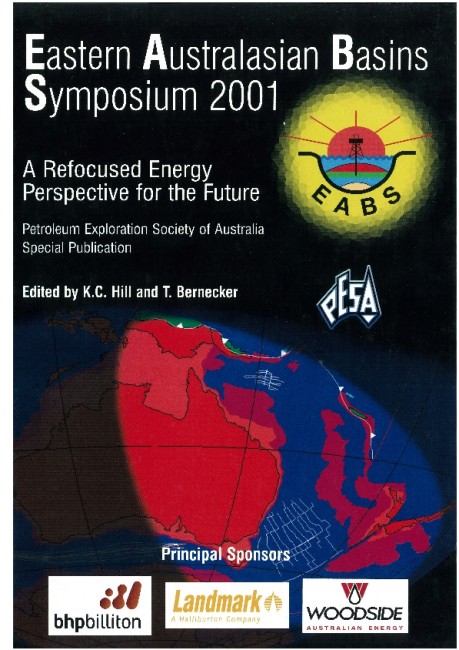Publication Name: Eastern Australian Basins Symposium 2001
Authors: H. Volk, S.C. George, M. Lisk, S.D. Killops, M. Ahmed and R.A. Quezada
Date Published: November 2001
Number of Pages: 33
Reference Type: Magazine Article
Abstract:
Two case studies from the Blackback (Gippsland Basin) and the McKee oilfields (Taranaki Basin) demonstrate the potential of the Molecular Composition of Inclusions (MCI) technique to provide detailed charge histories of petroleum reservoirs. In Blackback-2, source and maturity-related differences between a fluid inclusion oil (FlO) and the MDT oil from the main sandstone reservoir interval in the Eocene Latrobe Group indicate a two-phase filling history. A first charge of oil derived from a marine source rock at a maturity of about 0.6 - 0.7%vitrinite reflectance equivalent (VRE) was partly biodegraded and trapped as inclusions. A second charge was sourced once the fluvial and coastal deposits of the Latrobe Group reached the upper oil window (VRE=l.l%). This volumetrically more important oil charge diluted the first charge of marine oil. This result is of great significance because it provides the best evidence yet of a generative marine source rock in the Gippsland Basin that is capable of producing oil columns.
Two FIOs from Toetoe-2 and a crude oil from Toetoe-2D (McKee oilfield, siliciclastic reservoir rocks of the Eocene McKee Formation) are similar, but differ slightly from a crude oil from Toetoe-1A, indicating some reservoir compartmentalisation. However, within the Toetoe-2 and - 2D samples there are some subtle differences in the biomarker distributions which indicate that an early petroleum charge, still preserved in the FIOs, has been diluted by petroleum from a somewhat more coaly source rock facies. In particular, the greater abundance of
tricyclic terpanes in the FIOs suggests an early diagenetic influence of marine, saline water followed by a reworking of organic matter by halophilic bacteria, consistent with early generation from a marine-influenced coal. The similarity of the MCI data and the overall similarity of these data compared to the production oils gives confidence in the applicability of the MCI technique in areas where there are more major geochemical differences between inclusion and crude oils, such as at the Blackback oilfield.


